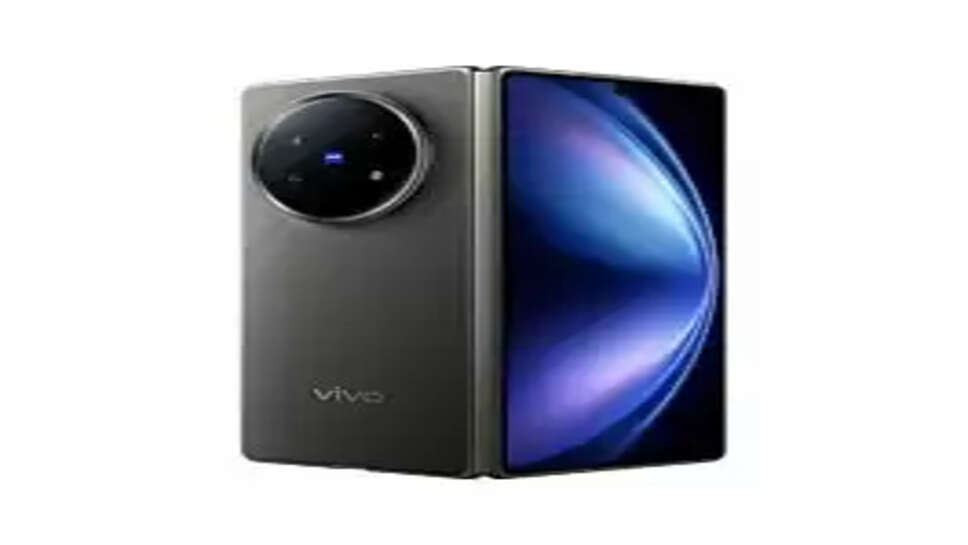Nostalgia Meets Innovation: Vivo X Fold 5 Reimagines the Foldable Era

It wasn’t long ago that BlackBerry reigned as the undisputed king of smartphones. That clicky QWERTY keyboard, the corporate vibe, the satisfying snap when you shut the cover—it all created a culture. Now, years later, another form factor is trying to do the same. Enter the foldables. With tech brands racing to perfect flexible screens, the big question is: are foldables merely nostalgic gimmicks, or are they truly the future?
To find out, we put Vivo’s new X Fold 5 through real-world usage for a week. Spoiler: it’s not just nostalgia dressed in AMOLED. But the experience is nuanced, and surprisingly... a little BlackBerry-esque.
The Hardware: Premium in Every Fold
The Vivo X Fold 5 is stunning—there’s no getting around it. When closed, it feels like a slightly thick, regular phone. When unfolded, it transforms into a nearly 8-inch tablet that challenges what you expect from a smartphone.
Vivo has worked hard on the hinge, which now feels smoother and more durable. It folds completely flat, no gaps or awkward spacing. There's a tactile pleasure in opening it, not unlike flipping open a BlackBerry back in the day. It’s not just about utility—it’s about the experience of using your phone.
With a leather-textured back (at least on the version we tested) and refined build quality, the X Fold 5 screams luxury. It's hefty, sure, but not in a bad way. In fact, that added weight gives it a sense of gravitas—much like holding a BlackBerry Bold once did.
Two Screens, One Identity
You get two displays: a full-sized 6.53-inch AMOLED cover screen and a main 8.03-inch inner foldable AMOLED screen. Both are crisp, bright, and fluid with 120Hz refresh rates. Switching between them is seamless.
The outer screen alone can function as a standalone smartphone—no compromises there. But it’s the inner screen that changes everything. Reading e-books, browsing documents, editing spreadsheets, or just casually watching Netflix feels more immersive.
There’s an odd comfort to it. Almost like using a PDA from the early 2000s—but faster, smarter, and more beautiful. That similarity to BlackBerry’s workhorse identity? It’s uncanny.
Multitasking Like a Boss
If BlackBerrys were known for efficiency, foldables are aiming for versatility. Vivo’s multi-window experience is well-executed. You can run up to three apps simultaneously in split-screen mode and float even more in pop-up view.
During testing, we had Chrome open on the left, Notes on the right, and YouTube running in a tiny window. It didn’t stutter. This is the type of phone that rewards power users—professionals, multitaskers, students, and even creatives.
You suddenly start doing more with your phone simply because you can. That’s the same mental shift BlackBerry introduced back in its heyday—phones were no longer just for calls and messages.
Camera: Flagship Grade, Foldable or Not
Vivo has never slouched on camera hardware, and the X Fold 5 is no exception. It packs a quad-camera setup co-engineered with Zeiss: a 50MP main sensor, 48MP ultra-wide, and two telephoto lenses (one 2x, one 5x periscope).
Photos are sharp, colors natural, and low-light performance is excellent. You can even use the main rear cameras for selfies using the cover screen as a viewfinder—a neat trick that only foldables allow.
It’s not a photography-first device like Vivo’s X100 Pro, but it’s easily among the best in the foldable segment.
Software and Experience: Surprisingly Mature
One major concern with foldables is the software. But Vivo’s Funtouch OS (based on Android 14) handles the dual-screen and dynamic layout surprisingly well. App continuity is mostly smooth: you can start a task on the outer screen and continue seamlessly on the inner one.
Vivo has also built in intuitive gestures and shortcuts that make multitasking easier. For example, swiping with two fingers splits the screen. Holding an app in the task switcher lets you launch it in a floating window.
It’s not quite Samsung’s One UI polish yet, but it’s getting very close—and for many, it’s already good enough.
Battery and Charging: Efficiency Despite Size
With two screens to power, battery life is understandably a concern. The 5,300mAh battery, however, holds its own. With moderate use, the phone easily lasted a full day. Heavy users might reach for the charger by dinner, but the 100W fast charging gets you to 100% in just about 30 minutes.
Vivo also includes 50W wireless charging and 10W reverse charging. It's one of the few foldables that doesn't force you to compromise on power features.
Pocketability: Still a Foldable Flaw
Despite its sleek design, the X Fold 5 is big when folded—bigger than most smartphones. It bulges in your pocket. If you’re wearing jeans, you’ll feel it every time you sit down.
BlackBerry users in the past proudly clipped their phones to belts or carried them in leather holsters. Foldables haven’t yet crossed into fashion comfort the way slab smartphones have. It’s one of the few lingering limitations of this form factor.
Price and Positioning: Luxury for Now
There’s no denying it: foldables like the Vivo X Fold 5 are expensive. In India, the expected pricing hovers near ₹1.5 lakh, placing it firmly in the ultra-premium category.
That’s not mass-market material. But neither was the BlackBerry in its prime. It was aspirational. A symbol of productivity and style. In many ways, foldables are targeting the same emotion. They are not meant for everyone—they are meant for those who want more from their phones.
A BlackBerry for the Modern Age?
So, are foldables like the Vivo X Fold 5 the new BlackBerrys? Yes and no.
Yes, in the sense that they redefine what a phone can do. They create a new workflow. They spark curiosity. They attract attention and signal a certain kind of user—serious, busy, a little tech-savvy.
No, in the sense that they’re not yet ubiquitous. They haven’t conquered the mainstream. And their durability and affordability are still in question for everyday buyers.
But if BlackBerry showed us that form can drive function, foldables are carrying that legacy forward—with more screens, fewer buttons, and a lot more ambition. The Vivo X Fold 5 doesn’t just fold—it challenges what you expect a phone to be. And that might just be the beginning of something big.
